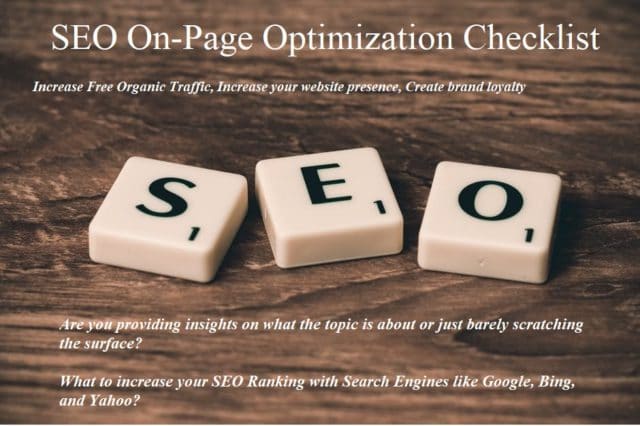Learning how to create content for affiliate marketing that ranks well on search engines is essential for driving traffic and increasing conversions.
Below you will learn how to create content that not only appeals to search engines but also engages real people.

Key Takeaway:
Creating great content isn’t just about putting words together; it’s about delivering value that enhances your affiliate marketing efforts. Focusing on the fine major points below, you can create content that resonates with your audience and ranks well. You’re going to find out about striking that crucial balance between optimized content for search engines and crafting pieces that real people find valuable and want to engage with.
5 Major Points for Writing Great Content
When writing great content, make sure these 5 major points are included.
- Be Trustworthy: Show authority and expertise by providing accurate, well-researched information. Clarity and conciseness are essential.
- Be Useful: Your content should offer something valuable and relevant to your readers’ interests.
- Be Original: Craft unique content based on your research and experiences.
- Be Timely: Ensure your content is up-to-date and relevant to current trends or events.
- Be Comprehensive: Cover all important aspects of your topic in detail.
How to Create Content for Affiliate Marketing That Ranks.

Why Google’s E-E-A-T Guidelines Matter
You might wonder why Google’s E-E-A-T guidelines—Experience, Expertise, Authoritativeness, and Trust—are important.
These guidelines help ensure that the content you create is not only optimized for search engines but also serves your audience’s needs. By incorporating the five major points above, you build a rapport with your audience.
They will see you as a reliable source for the best products or services in your niche, leading to better conversions.
Creating Valuable Content for Your Audience
Your goal is to create content that promotes products while providing genuine value.
It’s not just about making a sale; it’s about offering resources that readers will appreciate and refer back to.
Start by understanding your target audience’s needs and pain points.
If you are new to Affiliate Marketing, understanding how your content relates with your chosen niche to gain maximum benefits and more can be found under Affiliate Marketing for Beginners.
Listen to their challenges and deliver solutions through your content.
This empathetic approach positions you as a trusted advisor.
Keyword research is crucial for SEO, but understanding the search intent behind those keywords is even more valuable.
Choose keywords that align with your audience’s goals and write content that addresses those needs.
Pro Tip
Your content should answer questions before your readers even ask them.
This means integrating keywords naturally into informative content rather than stuffing them in.
Engage your audience with tips, how-to guides, and insightful reviews.
Your readers should feel informed and confident at every stage of their decision-making process.
Remember, creating great content is a gradual process. Your first attempt doesn’t have to be perfect.
Revisiting and updating your content as you gather insights about your audience will enhance its quality over time.
Optimizing Your Content for Search Engines
To ensure your affiliate marketing efforts are seen by the right people, your content must be easy for search engines to find and rank.
Start by incorporating long-tail keywords—specific phrases that potential customers are likely to use when searching.
Think like a customer when choosing language. Next, focus on metadata—title tags, meta descriptions, and headings—that give search engines a snapshot of your content.
Metadata acts like a movie trailer; it should be compelling enough to draw readers in.
In the world of SEO, backlinks are crucial. Focus on quality over quantity by building relationships with reputable sites that link back to your content.
This boosts both authority in the eyes of search engines and trust among potential customers.
Make sure your content is shareable across different platforms by adding social sharing buttons and clear calls-to-action (CTAs).
Good SEO balances technical elements with human-focused strategies; it’s not just about ranking high but also capturing the attention of real people.
Measuring Success and Continuous Improvement
To turn your content into a success story, measure its performance after it goes live.
Monitor key performance indicators (KPIs) like click-through rates, conversion rates, and time spent on the page to see what resonates with your audience.
Don’t stress over initial fluctuations; focus on long-term trends to gauge success. If you notice improvements, great!
If not, view it as an opportunity to adapt.
Regularly update your content to stay aligned with search engine algorithms and user preferences.
A/B testing can help you refine your strategy by allowing you to test different headlines, images, or CTAs.
Lastly, remember that the digital landscape is always changing—so should you!
Stay informed about the latest affiliate marketing trends and search engine updates to keep your content sharp and engaging.
Quality over quantity is your motto here.
Forge relationships with reputable sites for links back to your content, making it more authoritative in the eyes of search engines and potential customers alike.
You’ll also want to make sure your content gets around easily.
That means ensuring it’s shareable across different platforms.
FAQ’S
1. What are the best practices for keyword research in affiliate marketing?
Keyword research is essential for understanding what your target audience is searching for. Focus on long-tail keywords that are specific to your niche, as they often have less competition and can lead to higher conversion rates.
2. How can I ensure my content is valuable to my audience?
To create valuable content, start by identifying your audience’s needs and pain points through surveys or social media engagement.
Providing actionable solutions and insights will help establish you as a trusted resource.
3. What role does E-E-A-T play in content creation?
E-E-A-T stands for Experience, Expertise, Authoritativeness, and Trustworthiness, and it guides how Google evaluates content quality.
By demonstrating these qualities in your writing, you can improve your chances of ranking higher in search results.
4. How often should I update my affiliate marketing content?
Regular updates are crucial to keeping your content relevant and accurate.
Aim to review and refresh your articles every few months or whenever you notice changes in trends or user interests.
5. What types of visuals should I include in my content?
Incorporating images, infographics, or videos can enhance the reader’s understanding and engagement with your content.
Choose visuals that directly relate to the information you’re presenting to make it more impactful.
6. How do I measure the success of my affiliate marketing content?
Use analytics tools to track key performance indicators like click-through rates, conversion rates, and time spent on the page.
Regularly reviewing these metrics will help you understand what works and what needs improvement.
7. Can I use existing content as a basis for new affiliate marketing articles?
Absolutely! Repurposing existing content allows you to update information or present it in a new format, such as turning a blog post into a video or infographic.
Just ensure that any new version adds value and remains relevant.
8. What are some common mistakes to avoid when creating affiliate marketing content?
Common mistakes include keyword stuffing, lack of focus on user intent, and failing to provide original insights.
Avoid these pitfalls by prioritizing quality over quantity and ensuring that your content genuinely serves your audience’s needs.
Conclusion
Creating valuable affiliate marketing content that ranks well takes time and effort but pays off in the long run.
By focusing on trustworthiness, usefulness, originality, timeliness, and comprehensiveness, you can create engaging resources for your audience.
Have you learned something valuable from this guide?
Do you have additional tips or experiences you’d like to share?
Let us know in the comments below so we can all learn together!
I’m here to help you turn your content into a success story.









